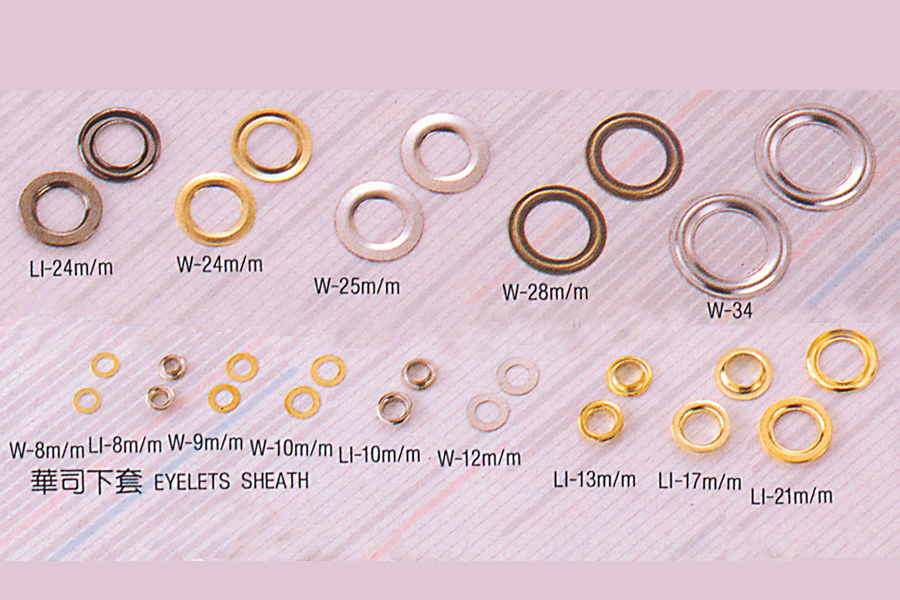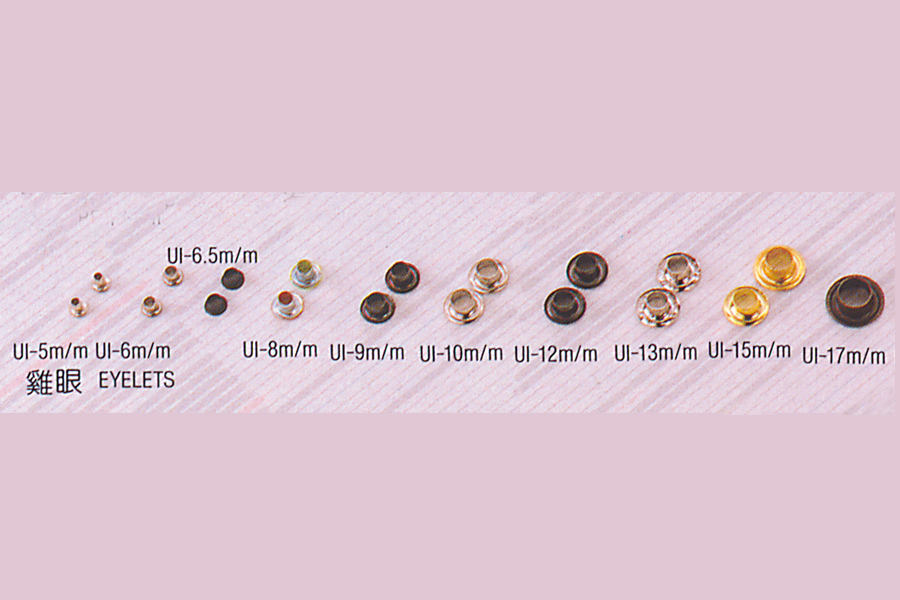Leather hardware
Leather hardware refers to metal accessories or accessories used for leather products. These accessories are usually used to make or decorate leather products, such as leather bags, belts, leather shoes, wallets, etc. There are various types of leather hardware, including but not limited to hinges, zippers, buckles, buckles, buckles, fasteners, lining nails, metal stamps, etc.
Leather hardware plays a vital role in the manufacturing process of leather products. These metal accessories are not only used for decoration, but also increase the stability and durability of leather products. For example, leather bags often use metal zippers or buckles to protect items from being dropped and provide easy opening and closing. The belt's buckles and fasteners adjust the size of the belt and secure the wearer's waist. In addition, some metal stamps and badges can add unique style and personality to leather products.
With the development of the fashion industry, leather hardware is constantly innovating and improving. The design of modern leather hardware is more diverse, focusing not only on functionality, but also on beauty and fashion. Some high-end brands regard the design of leather hardware as an artistic expression and are committed to creating unique metal accessories to enhance the added value of their products.
However, manufacturing high-quality leather hardware also requires strict production processes and quality control. Manufacturers must ensure the use of high-quality metal materials, precision machining and surface treatment to ensure product durability and aesthetics. At the same time, it is also necessary to consider how the metal accessories are combined with the leather to ensure the firmness and fit of the accessories.
In summary, leather hardware plays an indispensable role in the design and manufacturing of modern leather products. The quality and design style of these metal accessories are directly related to the quality and appearance of leather products. With the development of the fashion industry, leather hardware will continue to innovate and progress, bringing more surprises and satisfaction to consumers.
There are many types of leather hardware. Here are some common leather hardware accessories:
Buckle (D-ring): A clasp is a metal ring usually used on leather products such as belts and handbags. They have the ability to adjust the length of the strap to better suit the needs of the wearer.
Buckle: Buckle is a metal lock used for leather products such as belts and backpacks. They hold the belt or harness in one position while providing easy adjustment.
Zipper: A zipper is a metal interlocking device commonly used in the opening and closing parts of leather bags, wallets and other products. Zippers are fast and convenient, allowing users to easily access items.
Snap: Snap is a quick button commonly used for the opening and closing of leather jackets, boots and other products. They provide fast and safe opening and closing.
Clasp: Clasp is a button-type device used for leather products, usually used in pockets of handbags, wallets and other products. Fastening ensures that items cannot accidentally fall out.
Hinge: Hinge is a metal chain used for leather boxes, packaging boxes and other products. They enable the lid of the box to open and close smoothly.
Rivet: A lining rivet is a metal fastener used for leather products, usually used to secure leather linings or trims.
Metal Logo: Metal logo is a metal logo used on leather bags, leather jackets and other products. They can add brand and style identity to a product.
These leather hardware accessories play an important role in the design and functionality of leather products. With the advancement of technology and changes in fashion trends, the design and materials of leather hardware are constantly updated and improved. Whether it is a traditional classic style or a fashionable innovative design, leather hardware will continue to enrich and improve the quality and style of leather products.
When it comes to leather hardware, we can further discuss some special or featured leather hardware accessories:
Swivel Hook: A Swivel Hook is a metal ring with a rotating function, commonly found on handbags, watch straps and accessories. They allow the handbag or watch strap to rotate more flexibly, providing a more comfortable use experience.
Conical buckle (Conical Stud): The conical buckle is a pointed cone-shaped metal buckle, often used on leather clothing, leather boots and other products. They add eye-catching detail and personality to products.
Embellished Clasp: Embellished Clasp refers to a metal buckle with gems, crystals or other decorative materials added to the surface of the buckle. These embellished buckles add a touch of opulence and luxury to leather goods.
Tack Pin: A Tack Pin is a metal pin used in leather products, often used to secure decorations or badges. They can add a unique decorative effect to products.
Handles: Handles are metal handles used on handbags or luggage. They provide a comfortable grip and solid support.
Metal Chain: Metal chain is a metal chain used on handbags, belts and other products. Not only do they have a practical function, they also add a stylish touch to the product.
Ornamental Plate: Ornamental Plate is a metal decorative plate used on the surface of leather products. It is often used on handbags, wallets and other products. They can add unique texture and visual effects to products.
The above are some special or characteristic leather hardware accessories. They play an indispensable role in the design of leather products and can add color to the product and enhance the quality and value. With the advancement of designers' creativity and technology, leather hardware will continue to evolve, bringing more novelties and surprises to the fashion industry.
Production process: Manufacturing high-quality leather hardware requires multiple precise production processes. First, metal materials need to be cut, pressed, drawn, etc. to make parts of the desired shape. Next, these parts may require surface treatment, such as electroplating, painting, anodizing, etc., to increase texture and durability. Finally, the various parts are assembled together to form a complete leather hardware accessory.
Material selection: When manufacturing leather hardware, material selection is crucial. Common metal materials include stainless steel, aluminum alloy, brass, iron, zinc alloy, etc. Different materials have different characteristics, such as corrosion resistance, strength, weight, etc., so it is necessary to choose the appropriate material according to the product's usage requirements and design style.
Design and innovation: The design of leather hardware is a reflection of brand differentiation and product personality. Excellent designers must not only consider the practicality of the product, but also incorporate creative and fashionable elements, making leather hardware accessories a major feature of the product and attracting the attention of consumers.
Quality control: Manufacturing high-quality leather hardware requires strict quality control. Manufacturers should establish a complete quality management system and conduct product inspection and testing to ensure that products meet international standards and customer needs.
Environmental considerations: Modern society pays more and more attention to environmental protection. Leather hardware manufacturers should focus on using environmentally friendly materials and green production technologies to reduce the impact on the environment and promote sustainable development.
In general, leather hardware, as an important accessory for leather products, not only plays a decorative role in appearance design, but also plays a key role in functionality and quality. Only by continuously innovating and improving product quality can manufacturers remain competitive in the fiercely competitive market and win the favor of consumers.
Leather bag: Leather bag is one of the most common leather products, and leather hardware is widely used in leather bags. Leather hardware accessories such as zippers, buckles, buckles and shoulder strap connectors can improve the practicality and durability of the leather bag, while also adding to the design style of the leather bag.
Belt: Belt is another common leather product used to tighten pants or decorate the waist. The leather hardware on the belt includes buckles, buckles, buckles, etc. These accessories can make the belt easier to adjust and adapt to different waist sizes.
Leather boots: In the design of leather boots, leather hardware is often used in the lining nails, lace eyelets, etc. of the boots. These hardware accessories can enhance the structural stability of the boots and also add color to the boots.
Leather clothing: In the design of leather clothing, common leather hardware includes zippers, fasteners, tapered buckles, etc. These accessories not only provide convenient opening and closing methods, but also add a personalized touch to the leather jacket.
Wallets and Wallets: Leather hardware plays a key role in wallets and wallets, including zippers, buckles, wallet holders, card holders, etc. These accessories keep items securely stored while adding exquisite detail to the product.
Leather accessories: Leather hardware is also commonly found in leather accessories, such as bracelets, necklaces, mobile phone cases, etc. The design and material selection of these accessories can make the accessories more diverse and meet the tastes and needs of different consumers.
Different types of leather products have their own unique characteristics and uses. The selection and design of leather hardware should be based on the function and style of the product to ensure product quality and market competitiveness. In the future, as fashion trends continue to change, leather hardware will continue to evolve and innovate, bringing more surprises and pleasant experiences to consumers.


